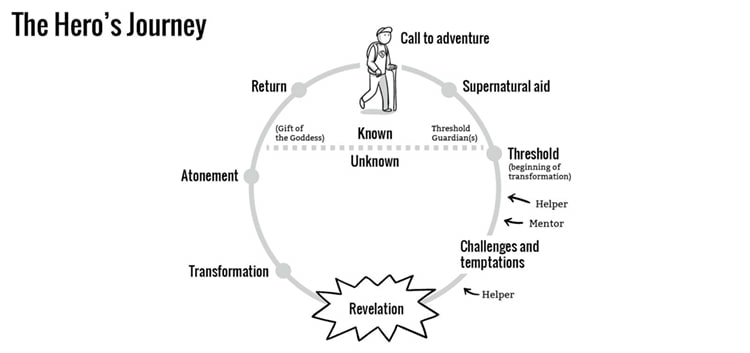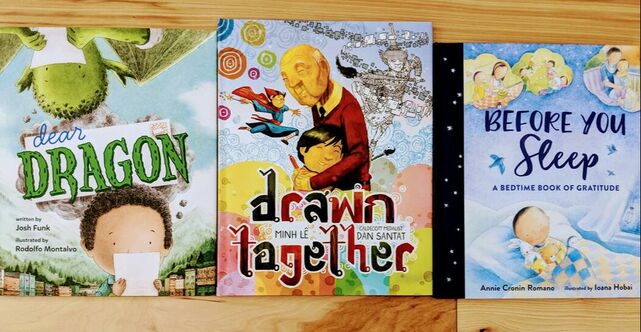
In books with a circular structure, the characters find themselves in the same space, whether externally or internally, in the end of the story as in the beginning. Circular structure is satisfying to readers. It offers complete closure and provides opportunity for the reader to compare, contrast, and consider the growth and change that happened within the full circle. A picture book example of circular structure is The Dot by Peter Reynolds. When Vashti’s own words are spoken back to her, her response drives home her growth. In A Mango Shaped Space by Wendy Mass (MG), the circular structure is evident in the main character’s synesthesia being present, being lost, being regained; the coming and going of cats; and a full-circle moment with her grandfather’s painting. I like to think of circular structure as a book hug. All the story elements are gathered together and complete, leaving the reader feeling fulfilled and loved. Quest or journey books traditionally have circular structures. Characters are home, they voyage, they return home. Jessie Sima’s charming picture book Love, Z, is an excellent introduction to a quest book, where the main character undergoes both a physical and internal quest. Series such as Beyonders by Brandon Mull and Brotherband by John Flannigan, and stand-alones such as The Emperor’s Ostrich by Julie Berry are examples of MG and YA quest books. Circular structure comes in many variations, preventing these types of books from becoming predictable. In Be Kind by Pat Zietlow Miller the circle expands to the universal, but contracts back to the main character in end. Sometimes the circle is ascending, almost like a loop-de-loop on a roller coaster. The character meets his full circle face on, and shoots past it, in a display of tremendous character growth and victory. After the Fall by Dan Santat and Drawn Together by Minh Lê are examples of this kind of uplifting, feel-good structure. Mystery or suspense novels have a spiral structure where each clue or fact circles the main character closer to the solution. A book can also contain multiple smaller circles within a bigger linear or circular structure, where subplots form mini-circles, or the main character has several circle-moments. Ways to enhance simple structures: Other structural elements can be added to basic linear and circular structures to provide interest. Younger readers, and picture book audiences, find comfort in repetition. Repetition gives readers some control over the text, the ability to make informed predictions, and a sense of what is important. Repetition can be bold, like an echoing phrase, a similar pattern repeated, or in dialogue. But it can also be subtle, hidden within the way a series of actions repeat, or within lists that progress in similar fashion, or even within the rhythm of words. All these known elements in different circumstances, are familiar, comfortable places for young readers - places to rest and gather thoughts before the next intense moment. Before You Sleep by Annie Cronin Romano, walks through the five senses in a linear way (and the illustrations show the four seasons), but the chorus repeating at the end of each sense’s section gives readers and listeners a clue that they are transitioning. In picture books, repetition can also be present in the illustrations. In But the Bear Came Back by Tammi Sauer, images of and allusions to the bear are present throughout the book, even when the bear is absent. In longer works repetition can appear in the form of themes, objects, or games, and sometimes a character has a saying or mantra that repeats. Even though the structure in The Seventh Wish (MG) is linear, Messner enhances the structure, and builds tension, with the Serenity Prayer repeatedly appearing in snippets and in full throughout the novel. It acts like a little red flag to readers, saying, “Pay attention!” and contributes to the main character’s development. Cumulative structure, where the narrative builds upon itself, adds silliness or tension. Classic examples of stories with cumulative structure are There was an Old Lady who Swallowed a Fly or The House that Jack Built, and more current examples are You must Bring a Hat by Simon Phillip, Stuck by Oliver Jeffreys and The Red Sled by Lita Judge. Cause and effect books (If you give a Mouse a Cookie by Laura Numeroff) also fall under this umbrella.
The Epic Adventures of Huggie and Stick (PB) by Drew Daywalt is a parallel journey, told by two narrators with very different points of view, creating two parallel circles. With parallel linear structure, like in Dear Dragon by Josh Funk, the same timeline is followed independently by two characters. Both the above-mentioned picture books also employ different types of text. Dear Dragon is epistolary, while The Epic Adventures of Huggie and Stick is conveyed through diary entries. Unconventional texts such as letters, sticky notes and emails (Everything, Everything (YA) by Nicola Yoon), text messages, letters, newspaper articles, and poems (Breakout (MG) by Kate Messner), are all ways to jazz up basic linear or circular structures. Bodies need strong frameworks to function properly. In the same way an author has to construct a story around a solid structure to keep readers anchored. Once the structure is sound, the other elements do not distract, but rather contribute to the structure. What type of basic structure suits your WIP the best? Once you have settled on a basic structure, can you use one or more of the other elements to add texture? Be sure to come back next week when we will look at books where structure also denotes meaning.
0 Comments
|
Peruse blogs for advice and tips from KidLit creatives.
Categories
All
Archives
April 2024
Click to set custom HTML
Click on the RSS Feed button above to receive notifications of new posts on this blog.
|


 RSS Feed
RSS Feed